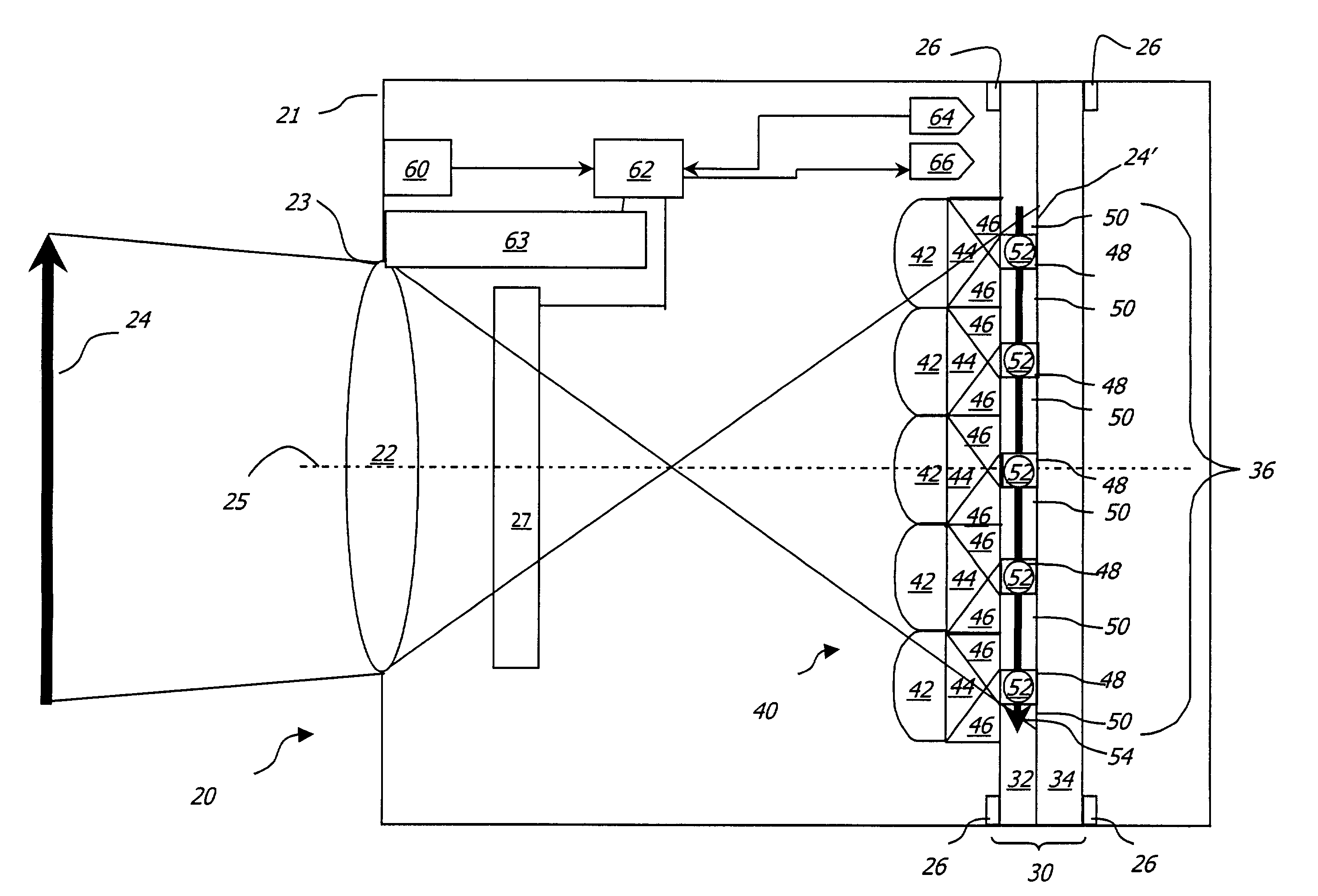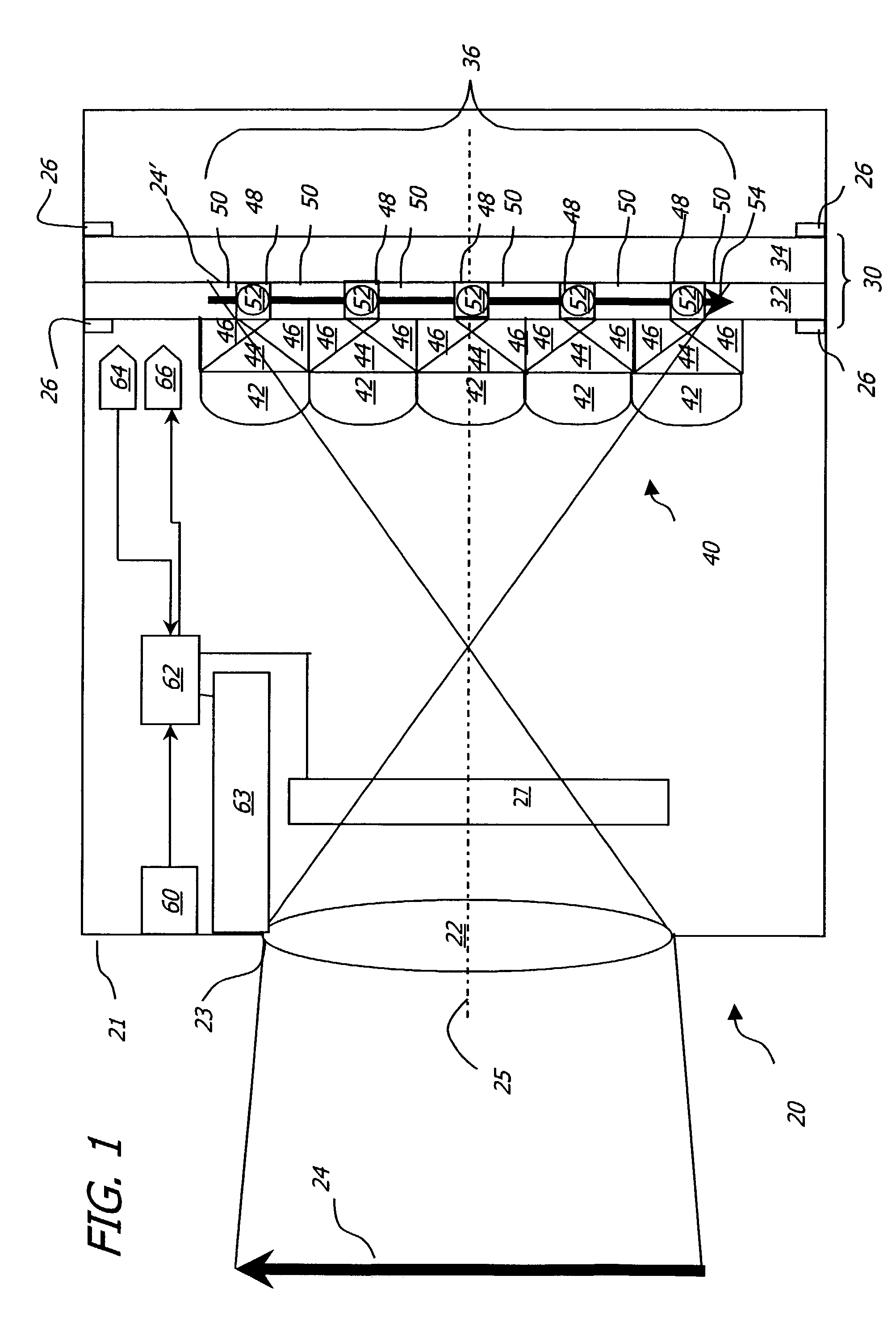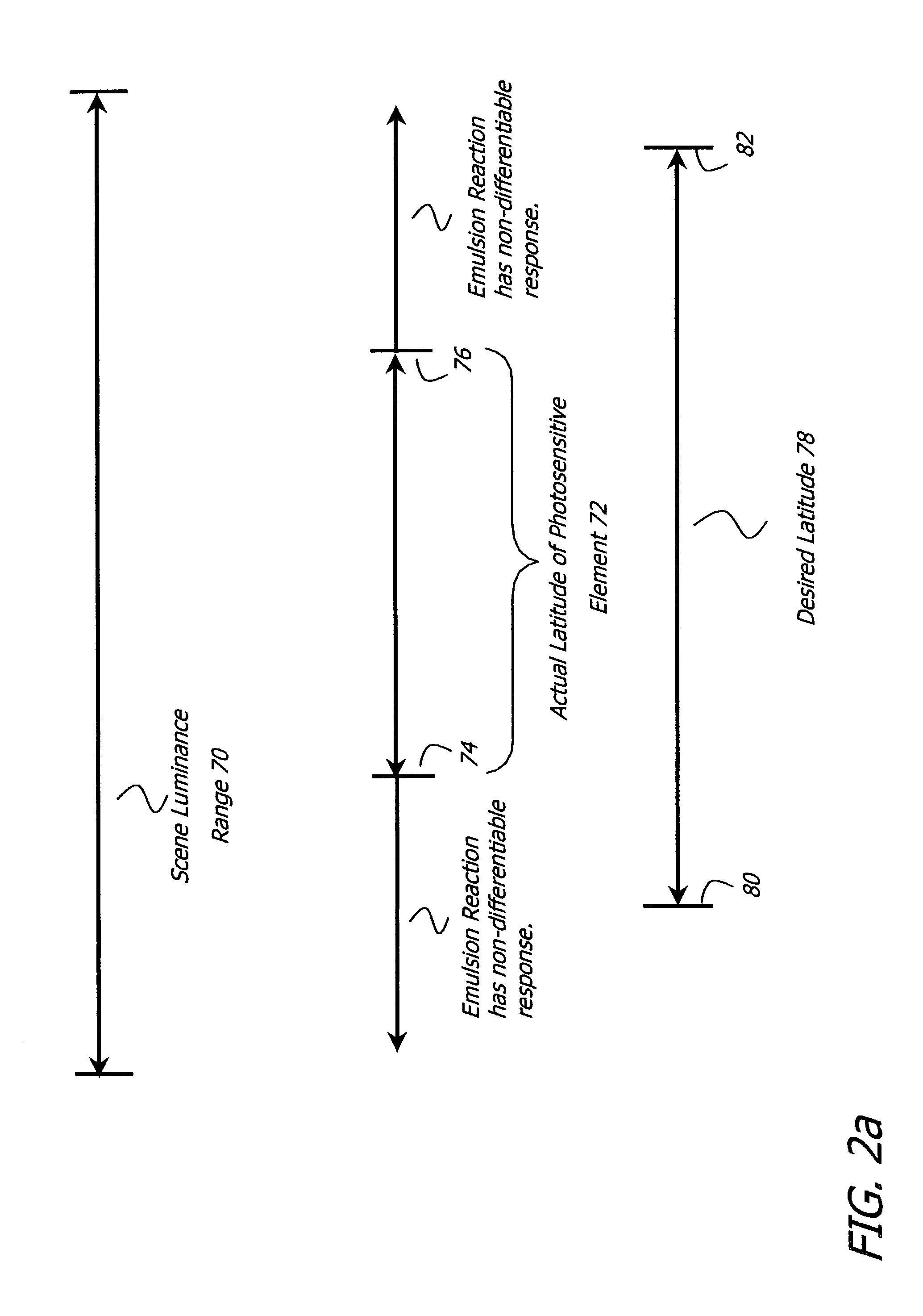Imaging using silver halide films with micro-lens capture, scanning and digital reconstruction
a silver halide film and micro-lens technology, applied in the field of photosensitive element based photography, can solve the problems of inherently reducing the depth-of-field of the associated camera system, not universally suitable for pictorial imaging with fixed aperture, and extremely wide latitude photosensitive elements are limited
- Summary
- Abstract
- Description
- Claims
- Application Information
AI Technical Summary
Problems solved by technology
Method used
Image
Examples
Embodiment Construction
[0036]This invention is related to photography systems and photography methods that extend the effective image capture latitude of a photosensitive element.
Image Capture
[0037]FIG. 1 shows a diagram useful in describing the operation of one embodiment of a camera 20 for forming an image on a photosensitive element 30 comprising a photosensitive layer 32 and a substrate 34. In the embodiment of FIG. 1, camera 20 includes a body 21 having an aperture 23 to admit light from a scene 24 into body 21. A taking lens system 22 directs light from a scene 24 along optical axis 25 toward a gate 26 that positions photosensitive element 30 at a defined distance from taking lens system 22 during exposure. In the embodiment shown, taking lens system 22 is located at aperture 23. Preferably, the depth of focus of the photosensitive element 30 plus taking lens system 22 is such that an image 24′ is formed on an imaging area 36 of the photosensitive layer 32 with scene 24′ having a consistent focus ac...
PUM
 Login to view more
Login to view more Abstract
Description
Claims
Application Information
 Login to view more
Login to view more - R&D Engineer
- R&D Manager
- IP Professional
- Industry Leading Data Capabilities
- Powerful AI technology
- Patent DNA Extraction
Browse by: Latest US Patents, China's latest patents, Technical Efficacy Thesaurus, Application Domain, Technology Topic.
© 2024 PatSnap. All rights reserved.Legal|Privacy policy|Modern Slavery Act Transparency Statement|Sitemap



